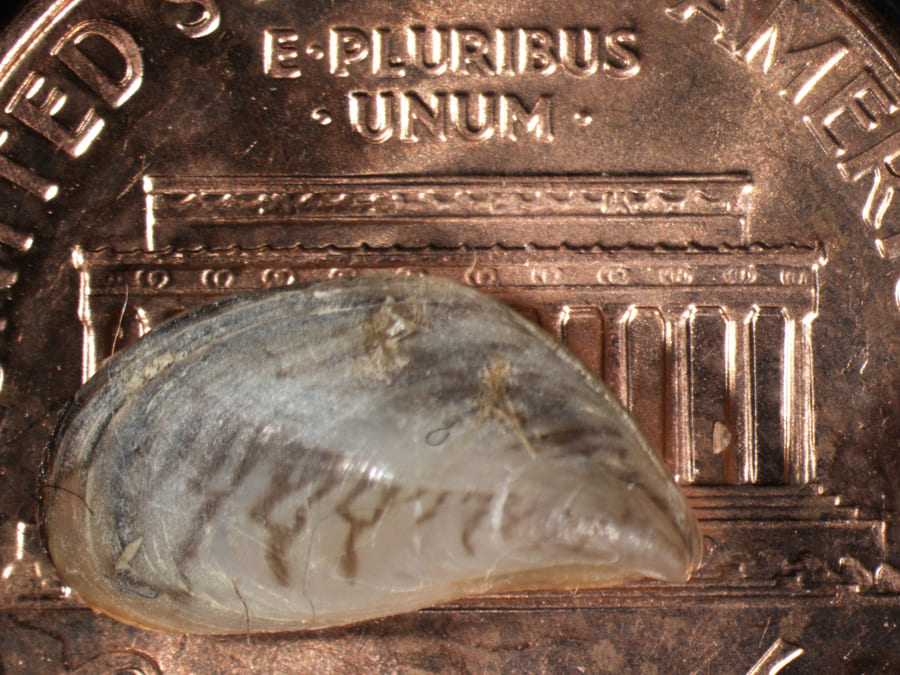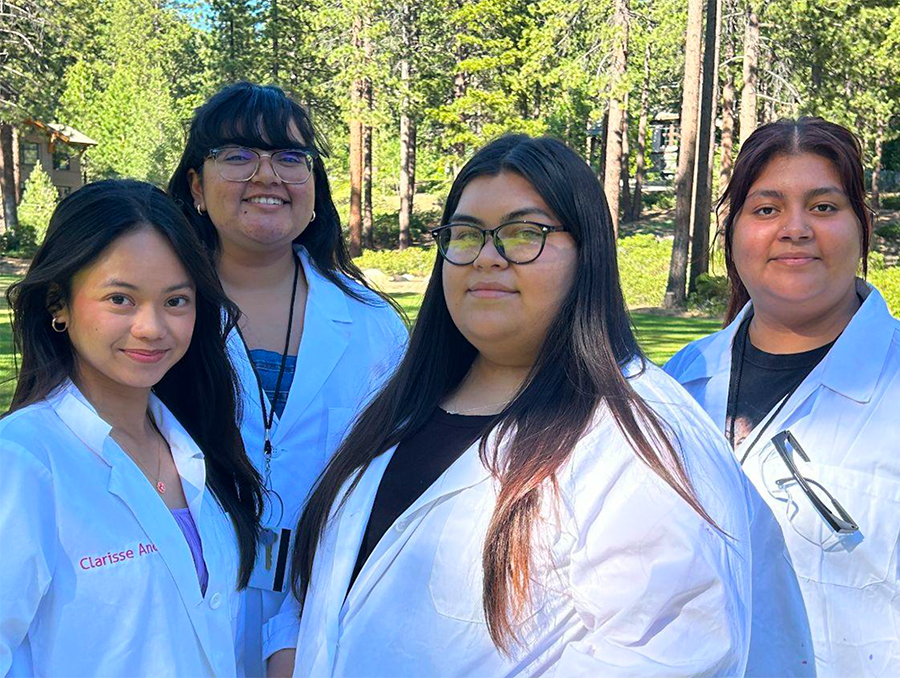In an eye-opening study to help protect the Lake Tahoe ecosystem from invasive species, University of Nevada, Reno researcher and faculty member Sudeep Chandra found that the pestilent quagga mussel that is wreaking havoc in waters around the country can indeed survive in the waters of Lake Tahoe.
Chandra, a limnology and conservation assistant professor from the University’s Department of Natural Resources and Environmental Science was selected to present his research and information about aquatic invasive species at the Lake Tahoe Forum on Aug. 20. The forum, hosted by U.S. senators from Nevada and California, has been held every August since the first forum hosted in 1997 by President Bill Clinton and Vice-President Al Gore.
It was previously believed that the low calcium levels of the lake waters would not support the survival or reproduction of the small bivalve mollusk and Tahoe had previously been categorized as “low risk” for establishment of the dreissenid mussel. If established, the mussels could forever alter the lake's sensitive ecology; they could clog water intakes, encrust boats and docks and cover now-pristine beaches with sharp and reeking shells.
Chandra is the principal scientist of the just-released study detailing the potential for the mussel to survive in the cold waters of Lake Tahoe. He and his team of researchers from UC Davis submitted the final report to the Tahoe Regional Planning Agency (TRPA) and the Lake Tahoe Aquatic Invasive Species Coordination Committee.
Quagga mussels that are proliferating at Lake Mead in Southern Nevada were used by Chandra and his team for the Lake Tahoe study. The researchers shipped the water from the Tahoe Keys at South Lake Tahoe to the lab at the University where they observed the quagga for 51 days to determine its ability to survive and reproduce in the cold, low-calcium, low nutrient waters.
While Lake Tahoe has no known populations of quagga mussels, the report suggests action should be taken to keep the harmful mussel from spreading to the famous alpine lake that straddles the Nevada/California border.
“We highly recommend continued monitoring and prevention efforts in Lake Tahoe for quagga mussel and other potential aquatic invasive species,” Chandra said. “The quagga has spread to other Western state lakes, so there’s a good likelihood it could spread to Tahoe.”
The 2007 discovery of quagga mussels in Lake Havasu, Lake Mead and the Colorado River Basin has prompted rapid cooperation and action by regional, bi-state, and federal agencies and non-governmental organizations in the Lake Tahoe region. The major pathway for transfer of invasive mussels to inland lakes is from boats, he said.
The invasive Asian clam has already taken a hold in Lake Tahoe, with several population centers identified at the south end of the lake.
These new threats, the quagga mussel, coupled with recent studies showing high incidence of boat traffic to Lake Tahoe from these areas, have prompted a tremendous ramping up. The U.S. Army Corps of Engineers has prepared a draft study on how to protect Tahoe from the quagga mussel, which is being considered by the TRPA. Chandra’s study was made possible through funding from the U.S. Army Corps of Engineers and the TRPA.
Chandra is one of many University of Nevada, Reno researchers studying Lake Tahoe and the Lake Tahoe basin, including soil scientists, limnologists, geologists, geophysicists, seismologists, sociologists, geographers and political scientists. University researchers collaborate with U.C. Davis, DRI, USGS and the US Forest Service in the Tahoe Science Consortium, which participates in the annual Lake Tahoe Forum with information and updates on other issues including invasive plants, invasive fish and water quality.
















